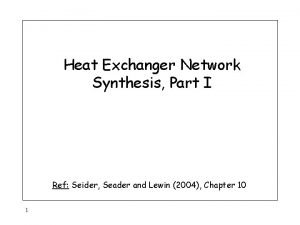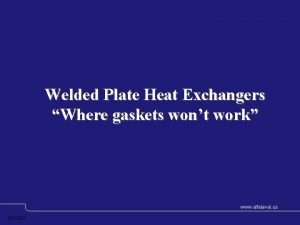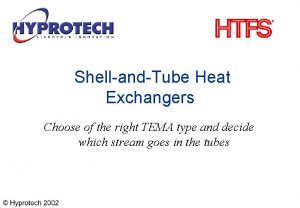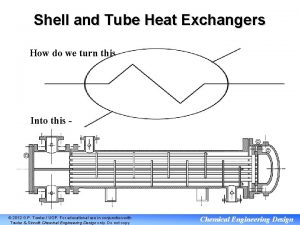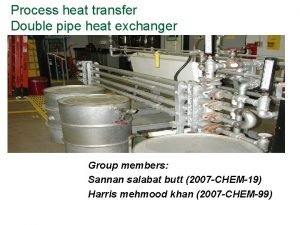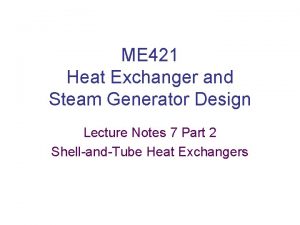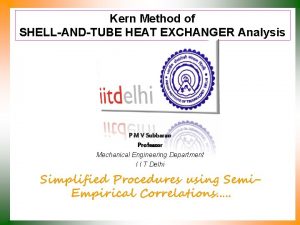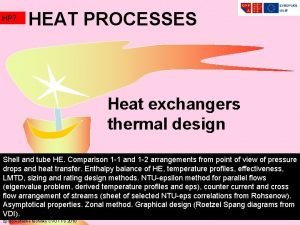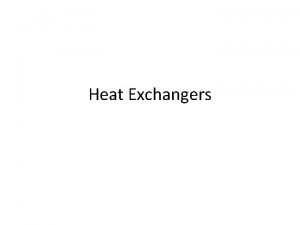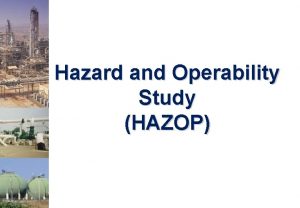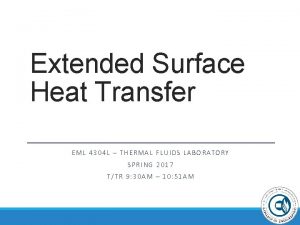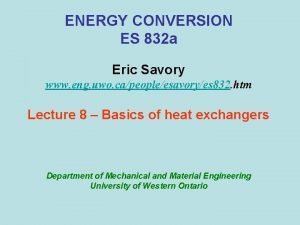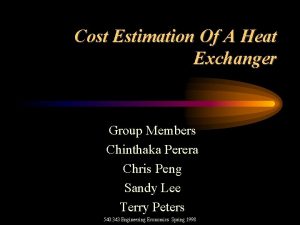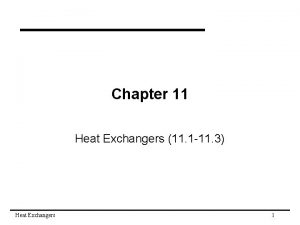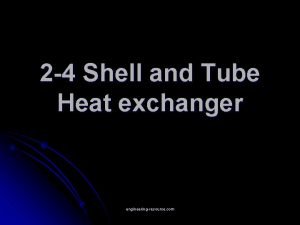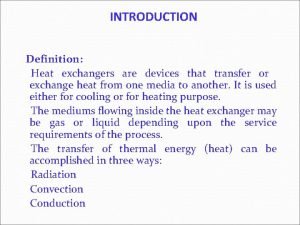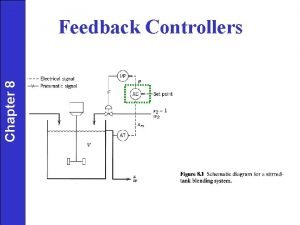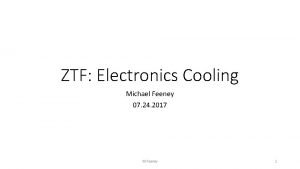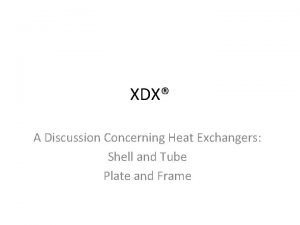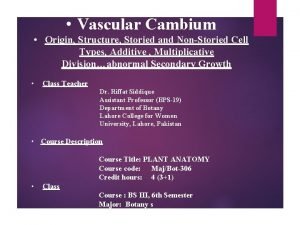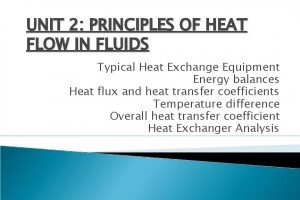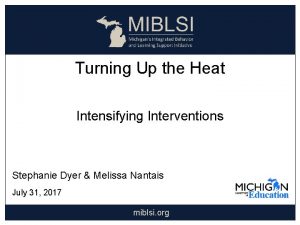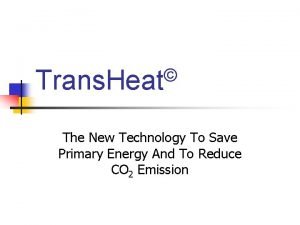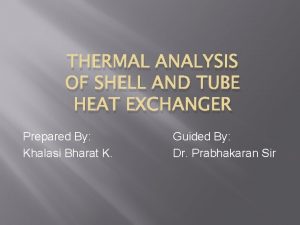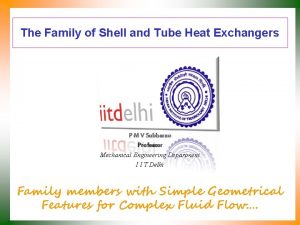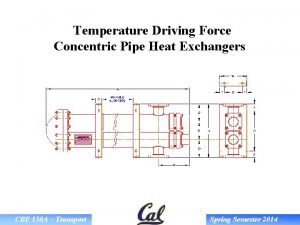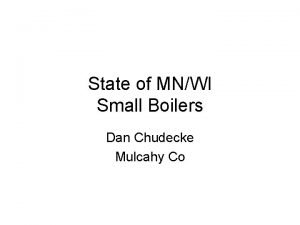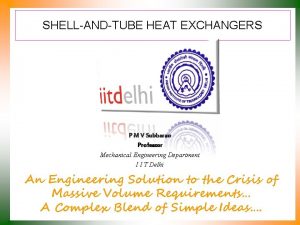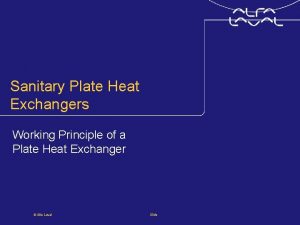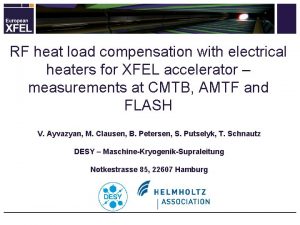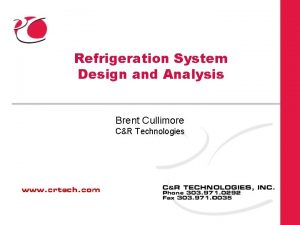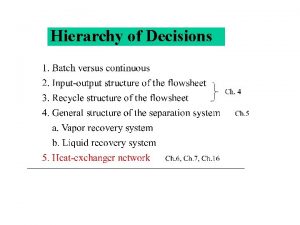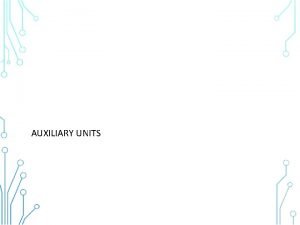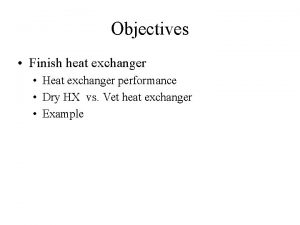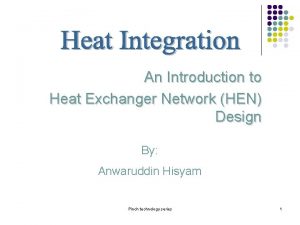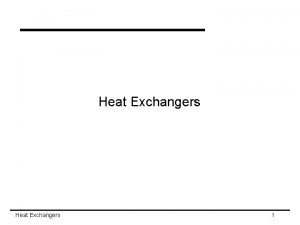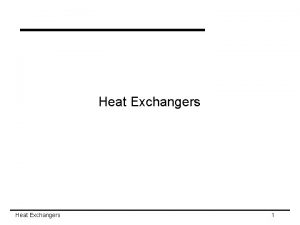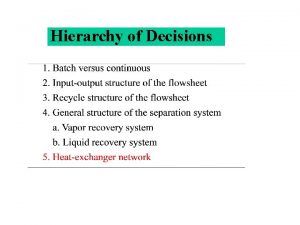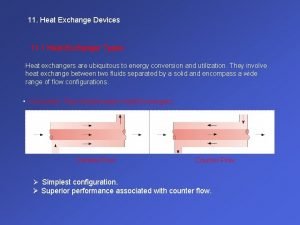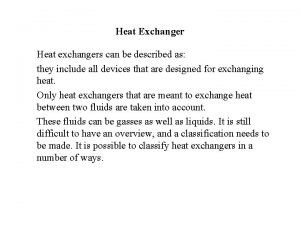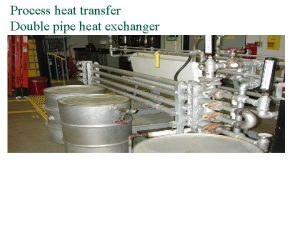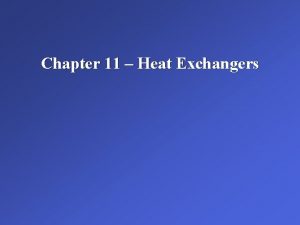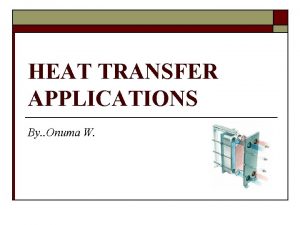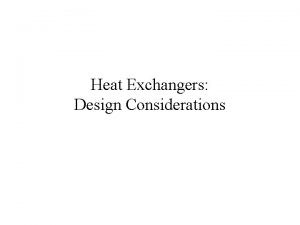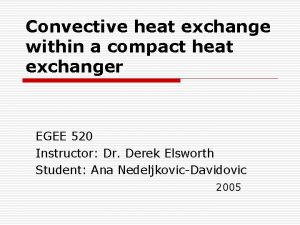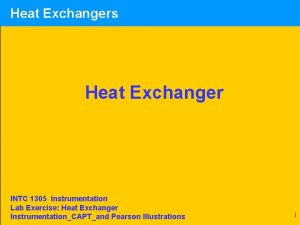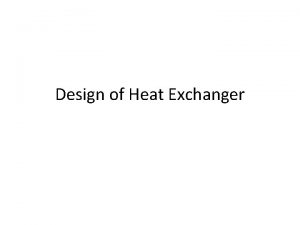Hierarchy of Decisions HEAT EXCHANGER NETWORK HEN SUCCESSFUL













































- Slides: 45

Hierarchy of Decisions

HEAT EXCHANGER NETWORK (HEN)

SUCCESSFUL APPLICATIONS O ICI ---- Linnhoff, B. and Turner, J. A. , Chem. Eng. , Nov. 2, 1981 Process Organic Bulk Chemical Specialty Chemical Crude Unit Inorganic Bulk Chemical Specialty Chemical General Bulk Chemical Inorganic Bulk Chemical Future Plant Specialty Chemical Unspecified General Chemical Petrochemical Facility* New Mod New New New Mod Energy savings Available k$/yr 800 1600 1200 320 200 2600 200 to 360 30 to 40 % 100 300 360 Phase I 1200 Phase II 1200 *New means new plant; Mod means plant modification. Capital Cost Expenditure or Saving, k$ same saving 160 saving unclear 30 % saving 150 1000 saving unclear 600 1200

SUCCESSFUL APPLICATIONS Table 1. First results of applying the pinch technology in Union Carbide Process Petro-Chemical Specialty Chemical Licensing Package Petro-Chemical Organic Bulk Chemical Specialty Chemical Organic Bulk Chemical Project Type Energy Cost Reduction $/yr Installed Capital Cost $ Mod. New Mod. 1, 050, 000 139, 000 82, 000 1, 300, 000 630, 000 1, 000 500, 000 57, 000 6, 000 Savings Yet Unclear 600, 000 6 5 1 ? 7 Mod. 1, 243, 000 1, 835, 000 18 Mod. 570, 000 2, 000 200, 000 800, 000 4 5 Linnhoff and Vredeveld, CEP, July, 1984 Payback Months

SUCESSFUL APPLICATIONS Fluor --- ICh. E Symp. Ser. , No. 74, 1982, P. 19 --- CEP, July, 1983, P. 33 FMC (Marine Colloid Division, Rockland, ME)

CONCLUSION HEN/MEN synthesis can be identified as a separate and distinct task in process design

IDENTIFY HEAT RECOVERY AS A SEPARATE AND DISTINCT TASK IN PROCESS DESIGN. 9. 60 200 C 18. 2 bar 1. 089 36 C 16 bar RECYCLE D 201 7. 841 REACTION 126 C 18. 7 bar 1. 614 200 C PURGE CW 153 C 7 703 115. 5 C FEED 5 C 19. 5 bar 0 179 180 C 141 C TO COLUMN 35 C 40 C 120 C 17. 6 bar FLASH 17. 3 bar 114 C Figure 2. 5 - Flowsheet for “front end” of specialty chemicals process

200 C Reactor 200 C RECYCLE TOPS Reactor 5 C FEED 35 C Purge Product 35 C PRODUCT 126 C FOR EACH STREAM: TINITIAL, TFINAL, H = f(T). Figure 2. 6 -Specialty chemicals process-heat exchange duties

H = 1722 REACTOR C = 654 a ) DESIGN AS USUAL STEAM RECYCLE 70 1 。 。 STEAM 1652 3 FEED 654 COOLING WATER 6 UNITS 2 PRODUCT

H = 1068 C =0 REACTOR 4 UNITS b ) DESIGN WITH TARGETS STEAM RECYCLE 。 。 1068 1 。 。 2 3 FEED PRODUCT

SUGGESTED PROCEDURE FOR THE DESIGN OF NEW HEAT EXCHANGER NETWORKS 1. Determine Targets. Energy Target -maximum recoverable energy Capital Target -minimum number of heat transfer units. -minimum total heat transfer area 2. Generate Alternatives to Achieve Those Targets. 3. Modify the Alternatives Based on Practical Considerations. 4. Equipment Design and Costing for Each Alternative. 5. Select the Most Attractive Candidate.

STEP ONE Determine the Targets

§ ENERGY TARGETS (TWO STREAM HEAT EXCHANGE) T/H DIAGRAM T Q TT =CP(TT-TS) TS H Figure 2. 10 - Representation of process streams in the T/H diagram H

T ( C) 200 UTILITY HEATING 140 135 115 100 70 UTILITY COOLING 350 300 400 H (KW) TWO-STREAM HEAT EXCHANGE IN THE T/H DIAGRAM

T ( C) 200 UTILITY HEATING 130 135 T 120 100 70 UTILITY COOLING 350 -100 =250 300 +100 =400 -100 =300 H (KW) TWO-STREAM HEAT EXCHANGE IN THE T/H DIAGRAM

FACTS 1. ( Total Utility Load )( Increa se 2. in Hot Utility = ) Increa se in Cold Utility

§ENERGY TARGETS (MANY HOT AND COLD STREAMS) COMPOSITE CURVES T T 1 CP=B T 2 (T 1 -T 2) (B) T 3 (T 2 -T 3) (A+B+C) CP=A CP=C T 4 (T 3 -T 4) (A+C) T 5 (T 4 -T 5) (A) H

§ENERGY TARGETS (MANY HOT AND COLD STREAMS) COMPOSITE CURVES T T 1 T 2 T 3 T 4 T 5 H

PINCH POINT Minimum hot utility T “PINCH” minimum cold utility Energy targets and “the Pinch” with Composite Curves H

m hot Streams Qin Heat n cold Streams or Exchange Qout System Qout - Qin = H

The “Problem Table” Algorithm - A Targeting Approach ---Linnhoff and Flower, AICh. E J. (1978) Stream No. CP TS TT and Type (KW/ C) (1) Cold 2 20 (2) Hot 3 170 (3) Cold 4 80 (4) Hot 1. 5 150 Tmin = 10 C ( C) 25 135 60 140 30 165 85 140 55 145 25 T 6 T 3 T 1 T 5 T 4 T 2 (T 2) (T 6)

Subsystem 2 T 1* = 165 C 4 T 2* = 145 C T 3* = 140 C T 4* = 85 C 3 T 5* = 55 C T 6* = 25 C # 1 TK CPHot - CPcold HK 1 20 3. 0 60 2 5 0. 5 2. 5 3 55 -1. 5 -82. 5 4 30 2. 5 75 5 30 -0. 5 -15

from subsys #2 90 C. . Heat Exchange Subsystem (3) Cold streams 80 C . . . hot streams 145 C . . . 135 C To subsys #4

FROM HOT UTILITY T 1* = 165 C ------------- ( 0 )------ 20 H 1 = 60 T 2* = 145 C -------------( 60 )-----( 80 ) minimum hot utility H 2 = 2. 5 T 3* = 140 C -------------( 62. 5 )---( 82. 5 ) H 3 = -82. 5 T 4* = 85 C -------------( -20. 0 )-----( 0 ) Pinch H 4 = 75 T 5* = 55 C -------------( 55. 0 )----( 75 ) H 5 = -15 T 6* = 25 C -------------( 40. 0 )---- 60 TO COLD UTILITY minimum cold utility

§ “PROBLEM TABLE” ALFORITHM SUBSYSTEM TM TC=T 0 (T 0) 1 (T 1) 2 (T 2) TP Tmin Hh 2 Hc 2 Hh 1 Hc 1

§ “PROBLEM TABLE” ALFORITHM ENTHALPY BALANCE OF SUBSYSTEM As T = T 1 - T 2 0

5. The Grand Composite Curve 80 60 Q(KW) 40 CU Qc, min 20 “Pinch” HU Qh, min 0 20 T 6 * -20 40 60 T 5 * 80 T 4 * 100 120 140 160 T 3*T 2* T 1 * 180

SIGNIFICANCE OF THE PINCH POINT 1. Do not transfer heat across the pinch 2. Do not use cold utility above 3. Do not use hot utility below

Q CU Qh Qh Qc, min Tc Qh, min Tp T Qh Qh, min Qc Qc, min Th HU

Q CU Qc, min Tc Qh, min Tp T T 1 Th HU

Q Qc CU 2 CU 1 Qc, min Tc Qh Qh, min Tp Th T HU

Q CU Qh, min Qc, min Tc Tp T 1 T Th HU

Q CU Q 1 Qc, min Tc Tp T 1 T Qh, min HU 2 Q 2 Tp ’ Th HU 1

H=27 MW H= -30 MW FEED 2 230 140 REACTOR 2 PRODUCT 2 200 80 H=32 MW FEED 1 20 180 REACTOR 1 250 OFF GAS 40 H= -31. 5 MW 40 PRODUCT 1 40 Figure 6. 2 A simple flowsheet with two hot streams and two cold streams.

TABLE 6. 2 Heat Exchange Stream Data for the Flowsheet in Fig. 6. 2 Stream Type Supply Target temp. TS ( C) TT ( C) H (MW) Heat capacity flow rate CP (MW C-1) 1. Reactor 1 feed Cold 20 180 32. 0 0. 2 2. Reactor 1 product Hot 250 40 -31. 5 0. 15 3. Reactor 2 feed Cold 140 230 27. 0 0. 3 4. Reactor 2 product Hot 200 80 -30. 0 0. 25

(a) (b) HOT UTILITY 245 C 0 MW H= -1. 5 235 C 7. 5 MW H= -1. 5 MW H= 6. 0 195 C 9. 0 MW H= 6. 0 -4. 5 MW H= -1. 0 185 C 3. 0 MW H= -1. 0 -3. 5 MW H= 4. 0 145 C 4. 0 MW H= 4. 0 -7. 5 MW H= -14. 0 75 C 0 MW H= -14. 0 6. 5 MW H= 2. 0 35 C 25 C HOT UTILITY 14. 0 MW H= 2. 0 4. 5 MW H= 2. 0 2. 5 MW COLD UTILITY Figure 6. 18 The problem table cascade. 12. 0 MW H= 2. 0 COLD UTILITY 10. 0 MW

Figure 6. 24 The grand composite curve shows the utility requirements in both enthalpy and temperature terms.

Process (a) HP Stream Fuel BOILER Process Boiler Feedwater (Desuperheat) LP Stream Condensate T* HP Steam LP Steam pinch CW H Figure 6. 25. The grand composite curve allows alternative utility mixes to be evaluated.

(b) Hot Oil Return Fuel FURNACE Process Hot Oil Flow T* Hot Oil pinch CW H Figure 6. 25. The grand composite curve allows alternative utility mixes to be evaluated.

(a) T C 300 HP Steam 250 200 LP Steam 150 100 50 0 0 5 10 15 H(MW) Figure 6. 26 Alternative utility mixes for the process in Fig. 6. 2.

(b) T C 300 250 Hot Oil 200 150 100 50 0 0 5 10 15 H(MW) Figure 6. 26 Alternative utility mixes for the process in Fig. 6. 2.

T* T*TFT Theoretical Flame Temperature T*O T*STACK Flue Gas QHmin Air T*TFT Fuel T*STACK T*O ambient temp. Stack Loss Ambient Temperature QHmin Fuel Figure 6. 27 Simple furnace model. H

T* T*’TFT T*TFT Flue Gas Figure 6. 28 Increasing theoretical flame temperature by reducing excess air or combusion air preheat reduces the stack loss. T*STACK T*O Stack Loss H

T* T* T*TFT T*ACID DEW T*PINCH T*C (a)Stack temperature limited by acid dew point (b)Stack temperature limited by process away from the pinch Figure 6. 29 Furnace stack temperature can be limited by other factors than pinch temperature.

T* 1800 1750 Flue Gas 300 250 200 150 100 50 0 0 5 10 15 H(MW) Figure 6. 30 Flue gas matched against the grand composite curve of the process in Fig. 6. 2
 Meaning of poster making
Meaning of poster making Heat exchanger network synthesis
Heat exchanger network synthesis Grid diagram heat exchanger network
Grid diagram heat exchanger network Screening decisions and preference decisions
Screening decisions and preference decisions Shell tube condenser
Shell tube condenser Storage type heat exchanger
Storage type heat exchanger Split backing ring heat exchanger
Split backing ring heat exchanger Tema nomenclature
Tema nomenclature Double pipe
Double pipe Bell delaware method
Bell delaware method Triangular pitch heat exchanger
Triangular pitch heat exchanger Counter flow heat exchanger
Counter flow heat exchanger Heat exchanger equipment
Heat exchanger equipment Hazop analysis for heat exchanger
Hazop analysis for heat exchanger Floating head heat exchanger products
Floating head heat exchanger products Extended surface heat exchanger
Extended surface heat exchanger Lmtd heat exchanger formula
Lmtd heat exchanger formula Fins
Fins Heat exchanger thermistor daikin
Heat exchanger thermistor daikin Shell and tube heat exchanger cost estimation
Shell and tube heat exchanger cost estimation Shell and tube type condenser
Shell and tube type condenser Regenerative type heat exchanger
Regenerative type heat exchanger 2-4 heat exchanger diagram
2-4 heat exchanger diagram Wood boiler heat exchanger
Wood boiler heat exchanger Cracked heat exchanger
Cracked heat exchanger Heat exchanger definition
Heat exchanger definition Reverse and direct acting controller
Reverse and direct acting controller Parker heat exchanger
Parker heat exchanger Standard refrigeration heat exchanger
Standard refrigeration heat exchanger Water to water heat exchanger
Water to water heat exchanger Storied and non storied cambium biology discussion
Storied and non storied cambium biology discussion Parallel heat exchanger
Parallel heat exchanger Rusty heat exchanger
Rusty heat exchanger Standard xchange heat exchanger
Standard xchange heat exchanger Shell tube condenser
Shell tube condenser Simple heat exchanger
Simple heat exchanger Tubesheet heat exchanger
Tubesheet heat exchanger Concentric double pipe heat exchanger
Concentric double pipe heat exchanger Giannoni heat exchanger
Giannoni heat exchanger S&t heat exchanger
S&t heat exchanger A shell and tube heat exchanger
A shell and tube heat exchanger Simple heat exchanger
Simple heat exchanger Sanitary plate heat exchanger
Sanitary plate heat exchanger Propane heat exchanger
Propane heat exchanger Rheem pro club
Rheem pro club Sinda fluint
Sinda fluint

